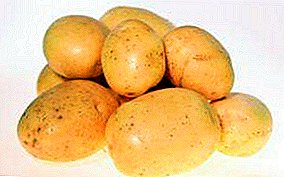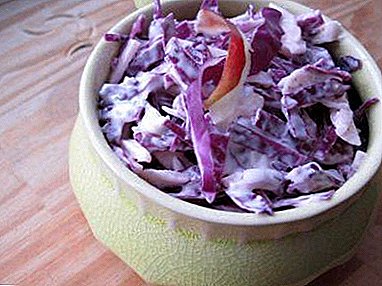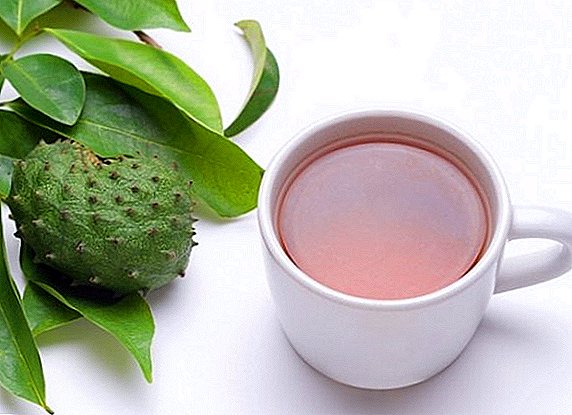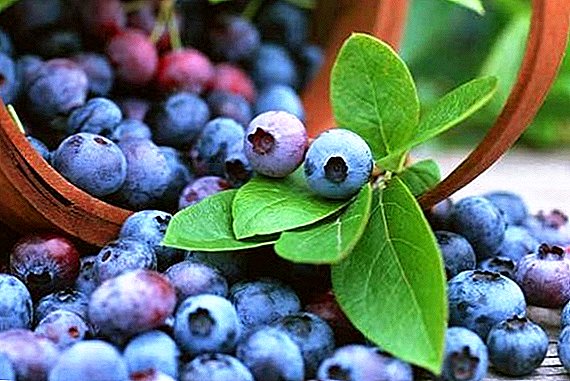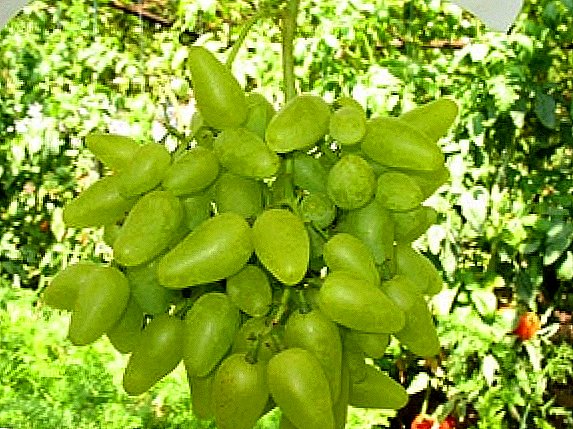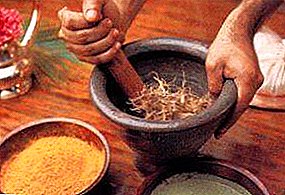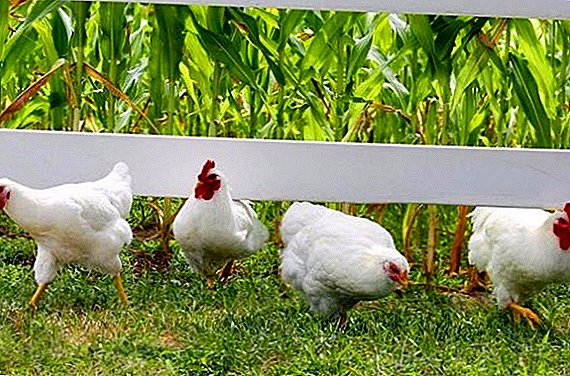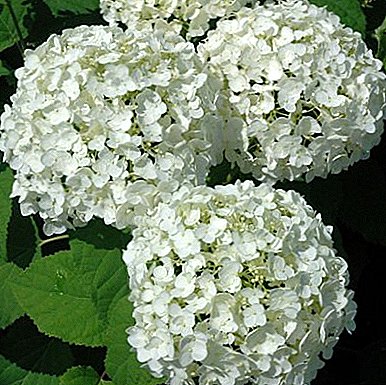
If you want to decorate a plot or garden and make its interior more alive, then Hydrangea tree annabelle - these are plants for you.
Her beautiful flowers will decorate any landscape and subject to the conditions of care, the shrub will delight you with its beauty for many years.
Description and characteristics of the variety
Hydrangea Tree Annabelle - shrub up to one and a half meters tall, but can reach a width of up to 3 meters. Hydrangea has a rather compact size and a beautiful white hat of flowers. It blooms from early July until September.
The bush is very unpretentious in leaving, grows practically in any soil, seldom is ill and quickly develops. Lives on average 45-50 years oldIt is considered a long-liver among shrubs.
Hortensia - very cold-resistant plant and one of the most popular with gardeners. There is also another type of tree hydrangea - Pink Annabel, different pinkish color and even greater resistance to cold.
Planting and care

Choosing a place
Hydrangeas will enjoy a very bright place, without drafts and direct sunlight. In the shade will grow and develop a little slower.
Priming
It grows well in any soil, but prefers loamy and acidic soil, as well as good drainage. Under the bush it is advised to make a little peat. The plant does not tolerate calcareous soil, likes humus. Every six months, it is advised to loosen the soil near the bush. And it is desirable, if possible, to weed the soil from the weeds.
The hole for planting is made wide, up to half a meter, since the hydrangea has a strongly expanding surface root system. When planting, it is advised to place 40-60 grams of any mineral fertilizers in the hole, and place the hydrangea itself for a couple of hours in a growth stimulator for the roots.
Watering
Hortense loves abundant wateringdo not allow complete drying of the soil.
Top dressing
Fertilizers for hydrangeas are suitable and mineral, and organic for flowering plants. Introduced in spring and summer. Also, with poor soil, you can make leaf soil, humus, peat and sand.
Important: for this bush can't to bring lime and ashes into the soil!

Breeding
Propagate the plant is quite simple, basically cuttings and dividing the bush, sometimes branches.
Cuttings are taken from the branches of this year, cut and rooted in the soil from humus, black soil with the addition of sand and peat. It is advisable to plant the cuttings in the shade and cover with a trimmed plastic bottle.
The division of the shrub during transplantation is as follows.
An adult hydrangea is divided into several parts with a shovel, then the roots are divided, trying not to damage them. Then the resulting shrubs are planted in the ground, plentifully watered.
Pruning
Plants of this species perfectly amenable to pruning. Conduct it to form a lush crown of a rounded shape.
Pruning is carried out mainly in the autumn. Removed faded flowers and old dry shoots. This will give power to the plant for new shoots.
In March - April, the shrub is subject to the rejuvenation procedure. Choose about 10 young shoots and prune them to 1/3. The remaining shoots need to saw off.
Pruning advised to hold as the flower grows.
Important: plants that have not reached the age of 3 years, do not prune!
Wintering
Hydrangea can tolerate winter without shelter, but in the cold northern areas it is recommended to cover it.
Diseases and pests

Caring for a plant on average does not cause much trouble, you should only follow certain rules: irrigate well and periodically fertilize.
The plant rarely suffers with a downy powdery rose (treated with copper oxychloride) and chlorosis (it is necessary to increase the acidity of the soil).
Mostly hydrangea affected by pests.
They settle on the leaves and the trunk of the plant - these are scale insects and spider mites, bugs.
If the leaves began to dry and turn yellow, then most likely it is a tick.
Get rid of pests will help special preparations.
Treatment
When infections are treated Bordeaux liquid, a mixture of copper sulphate and milk of lime. And from pests help drugs "Iskra-bio" and "Fitoverm".
If you like beautiful flowering shrubs that do not require careful and constant care, then hydrangea is perfect for you.
With good watering and light, the hydrangea will bloom for a long time and will delight you with its beauty!
A photo
See more photos of hydrangea tree Annabel:




Useful information
Check out other materials about garden hydrangea:
- How to properly care for bobo paniculate hydrangea? Growing and preparing for winter
- How to properly care for Hydrangea Limelight?
- How does the Duboliferous hydrangea overwinter?
- Frost-resistant hydrangea Pinky Winky on your site
- Hortensia paniculata grandiflora - features of care and reproduction in the garden plot
- Frost-resistant large-leaved hydrangea
- Hydrangea curly (petiolate, climbing) - a hedge in your garden!
- Tree hydrangea in your garden - planting and care, breeding, wintering
- How to make friends with serrated hydrangea?
- Japanese hydrangea Kyushu in your garden


